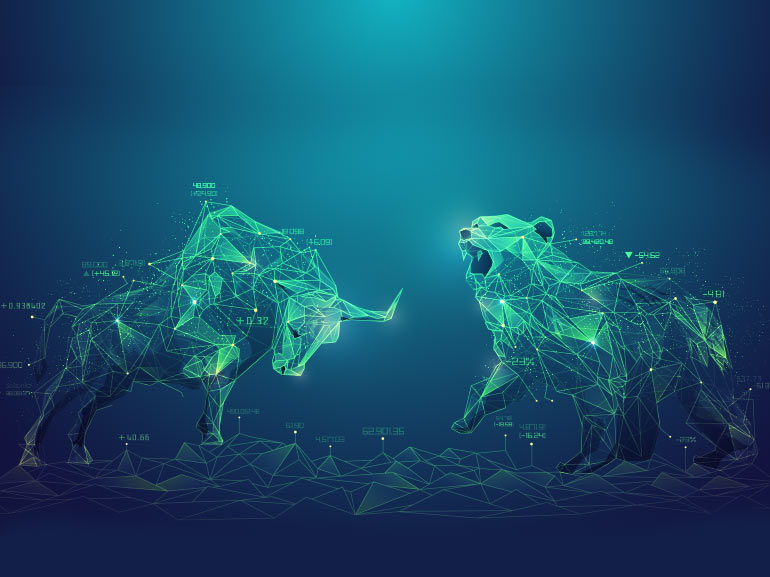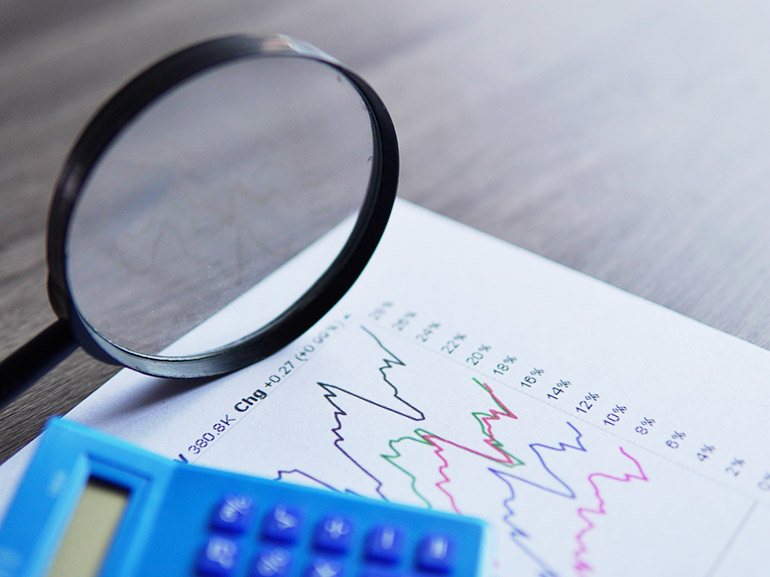Bull vs Bear Market - What’s the Difference?
The term “Bulls and Bears” may not be so foreign to market watchers, traders, or investors, but what exactly does it mean, how did it come about, how do you trade during bullish and bearish markets, and what’s the difference between the two markets? Here is what you need to know:

TL;DR
A bear market is characterized by a decline in market conditions, often linked to economic slowdowns, inflation, high unemployment, and negative investor sentiment. Examples include the tech sector struggling during inflationary periods, where stocks see steep declines.
A bull market is where prices are rising or expected to rise, often tied to stable economic growth and high investor confidence. The 2009-2020 bull market following the Global Financial Crisis is a prime example.
The terms come from how these animals attack; bulls charge upward with their horns, symbolizing a rising market, while bears swipe downward with their claws, representing a declining market.
Bull markets are marked by economic growth, rising wages, and positive GDP, while bear markets are characterized by inflation, weak GDP, and higher consumer prices.
What Is a Bear Market?
In the past few months, as the war in Ukraine, inflation, rate hikes, sanctions on China, and recession fears among a cocktail of devastating factors took a toll on economies around the world, the term “bear markets” or “bearish territory” made the headlines numerous times, but what does a bear market mean exactly?
A bear market is a term used to describe declining, weakening, or falling market conditions. Furthermore, economic slowdowns, layoffs, and high unemployment rates are some of the factors that come into play when a bear market materializes.
Take, for example, the burn tech stocks felt from the rising inflationary heat in the past couple of months as an evident sign of a bearish market. This is because, due to their dependence on future cash flows, technology stocks are generally seen as particularly vulnerable to negative market moods caused by inflation. As a result, investors tend to stay away from technology and invest in safe-haven assets instead, which are assets that are considered more “inflation-proof.” In turn, many big tech companies like Tesla (TSLA), NVIDIA (NVDA), Microsoft (MSFT), and Intel (INTC) fell harshly. They hopped on the layoffs bandwagon in order to stay afloat as their stocks plummeted, thus entering bearish territories.
What Is a Bull Market?
If a bear market could have a counterpart, a bull market would be it. So, what is a bull market, and what is the difference between bull and bear markets? The term bull market refers to markets that are expected to rise or are already rising during a stable economy, whereas bear markets refer to markets that have dropped or are expected to drop from their highs during a receding economy, during which most stocks decline in value.
Further, while bear markets are characterized by economic turmoil, weakening activity, and lower prices, bull markets are characterized by rising prices. In this stage of rising equity prices, investors usually expect the uptrend to last for a long time. Additionally, bearish markets are often associated with high employment rates and strong economic growth.
A distinct recollection of a bullish market is the S&P 500 (USA 500) 2009-2020 bull market, which is the longest bull market in history. After falling following the 2007-2008 Global Financial Crisis (GFC), the worst worldwide global economic crisis since the Great Depression era, the S&P 500 index was able to recoup its losses by skyrocketing from below 800 points in 2009 to 3207 points up till the early 2020 COVID-19 pandemic’s stock crash. (Source: The Motley Fool)
What Is the Origin of the Term Bulls and Bears?
There are numerous hypotheses about where this term came from. One of the most popular ones is that these terms are derived from the way bulls and bears attack. Accordingly, whereas bulls swipe their horns upwards (marking a rising market), bears swipe their claws downward (reflecting a slowing or lowering market).
Macroeconomic Indicators of a Bull and Bear Market
From a macroeconomic standpoint, bull markets are accompanied by higher wages, economic growth, and increased supply-demand, while bear markets are characterized by inflation, higher consumer prices, and lower wages. Additionally, interest rates are usually deemed positive in bull markets because it means investors tend to gain more money from their investments, whereas in bearish markets, some investors tend to shy away from the market, and interest rates put pressure on them. GDP figures also tend to be higher in bull markets as economic demand increases, rendering more sales and turnover. In contrast, bear markets come with lower GDP expectations, a decline in demand and production of goods, and weak sales and turnover.
Are We in a Bull or Bear Market?
The answer to whether or not we are in a bear market or will continue to be in one is neither black nor white. We’ll have to be patient to see how the market fares in the coming days or months in order to decide for ourselves.
Conclusion
In summary, whether the market is bullish or bearish depends on a variety of macroeconomic factors, including inflation, employment rates, GDP, and market sentiment. While recent events have caused significant declines, the future remains uncertain, and analysts are divided on whether we are entering a recovery or heading deeper into bearish territory. Staying informed and adapting strategies are key for traders and investors navigating these volatile times.
FAQs:
What defines a bear market?
A bear market is characterized by a significant decline in market prices, typically more than 20%, accompanied by economic downturns, high unemployment, and inflation.
What defines a bull market?
A bull market refers to a market where prices are rising or expected to rise, often during periods of strong economic growth and investor optimism.
Why are they called bulls and bears?
The terms come from the way the animals attack. Bulls charge upward with their horns, symbolizing rising markets, while bears swipe downward with their claws, symbolizing falling markets.
How do you trade in a bear market?
In a bear market, traders may opt for safer investments like bonds or gold, short-sell stocks, or take a more defensive approach by focusing on companies with strong fundamentals.







